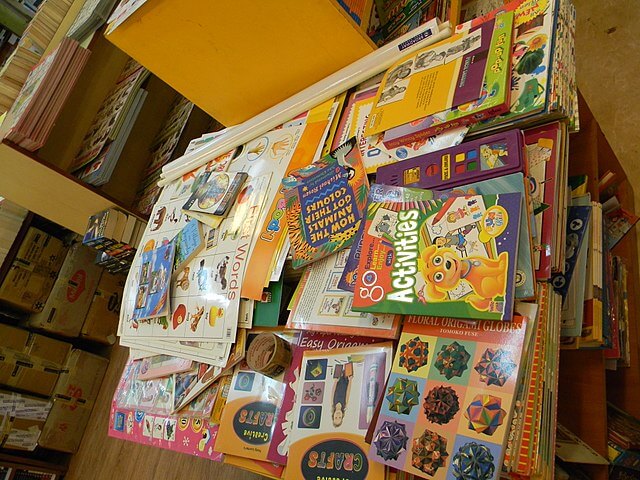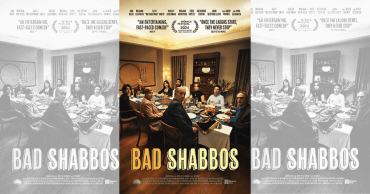
Jewish Representation in Children’s Books Can Combat Antisemitism
Over the past 14 years working as an occupational therapist in the NYC Department of Education, I’ve cherished teaching children how to hold a pencil, tie shoelaces, and navigate school challenges. But the most impactful experience continues to be a deeply personal one: Seeing the value society gives to the populations portrayed in their educational media, including children’s books, curriculum textbooks, educational videos, music, academic worksheets, and even board-games and toy packaging.
I’ve viscerally experienced how representation shapes social dynamics, both inside and outside the classroom. I’ve seen how beautifully and innocently children’s stories and media convey emotion and care, giving children of diverse ethnicities and religions a sense of belonging. When children with individual differences are portrayed with love, attention, and affirmation, it spills over into how classmates, teachers, and communities treat them. Those who are visible are included and respected. Those who are invisible are often overlooked, misunderstood, and sometimes even targeted.
Knowing the vulnerability of the Jewish community on the streets—and its likely causes—has made it deeply painful to see our community absent from stories, books and games that could be a natural remedy to the social problem of antisemitism.
Representation has been countering discrimination and harmful biases toward vulnerable groups for decades. Diverse children are represented in the educational books and games I use with my students every day. Every day, I use materials featuring children of many ethnicities and religions. But Jewish children are almost never included.
This painful absence feels especially stark in light of real events I’ve witnessed during my education career: the 2013 “knockout game” attacks targeting New York Jews, violent antisemitic hate crimes in 2019 at a New York synagogue and supermarket, and recent antisemitic graffiti on a Brooklyn Jewish school.
Additionally, Jews are now the most frequent victims of religion-based hate crimes in the U.S. Although we make up only about 2% of the population, recent FBI data (2023–2024) shows that Jews accounted for 68–69% of all victims of religion-based hate crimes. And according to the 2024 FBI Hate Crimes Report, Jews are not only the most targeted minority group per capita, but—since October 7—are now the most targeted group in raw numbers as well.
At the same time, the majority of Jewish children in the U.S. attend non-Jewish schools—but there are so few Jewish students nationally that many American children will never meet a Jewish classmate. If Jewish children are also absent from mainstream media, non-Jewish students will only be able to rely on tired stereotypes and misconceptions. Representation is therefore not just about self-recognition, it’s about shaping society’s perception to reduce prejudice.
Inclusion in media functions as subconscious social programming, especially for children, who are highly impressionable and will shape tomorrow’s society. Media showing children of various backgrounds must include Jewish children, just as it includes children of color, Muslim children, and children of various abilities.
It’s simple: Jewish children can appear alongside peers in everyday stories and scenes—playing at the park, meeting friends, and attending community events—while remaining fully observant. Jewish children should be recognized as playmates and community members—not only tied to holidays or religious observances.
Everyday visibility helps other children see Jewish peers as friends and equals. Showing Jewish children as valued citizens in the media sends a clear message: Jewish identity is respected, and antisemitism is unacceptable.
Below are a number of practical ways to help ensure this visibility:
- Email content creators—children’s book publishers, educational video producers, textbook authors, game and toy companies—insisting on Jewish inclusion in mainstream learning resources. (Please see a full list at the end of this article for a comprehensive list for whom to contact).
- Highlight Jewish-inclusive content publicly, so that creators and educators notice demand and begin imitating it.
- Jewish children’s media (currently only utilized within our community) is abundant, so we can begin sharing it with wider audiences. We have so many beautiful cultural activities and inspiring lessons to show others!
- Encourage schools and libraries to adopt inclusive books, videos, and worksheets featuring Jewish children alongside other minority groups.
- Create new content where gaps exist. Parents, teachers, and Jewish creators can produce stories, videos, or classroom materials for larger audiences, including Jewish children living ordinary, relatable lives alongside their peers.
By intentionally including Jewish children in media, we show that faithful observance and full participation in public life are compatible, and that society must respect both.
Jewish representation is not optional—it’s a proactive and necessary tool to protect children, shape social norms, and counter prejudice. When Jewish children appear alongside other groups in relatable ways, society learns to see them as peers and to protect them. Each book, video, or worksheet featuring Jewish characters helps change the real-life story on our streets, giving Jewish children and Jewish communities the recognition, respect, and most importantly—safety they so desperately need, now more than ever.
Some of the main educational companies that produce children’s media:
All of these companies have diversity and equity mission statements and express a commitment to making their materials culturally representative. However, they consistently show a gap in Jewish representation compared to other minority and vulnerable groups.
School textbooks and curricula: Pearson, McGraw‑Hill, Houghton Mifflin Harcourt / HMH
Children’s book publishers: Penguin Random House, HarperCollins, Hachette Book Group, Usborne Publishing, Lee & Low Books
Online book platforms / interactive reading apps: GetEpic.com, Raz-Kids
Crowdfunding for classroom resources: DonorsChoose.org — actively celebrates heritage months for many groups, including Black, Hispanic/Latinx, Asian American, and Native American communities, but Jewish Heritage Month is rarely highlighted.
Retail / online marketplaces: Amazon — prominently features promotions for heritage months such as Black History Month, Hispanic Heritage Month, and Asian American and Pacific Islander Heritage Month, yet Jewish American Heritage Month has little visibility.
Educational games / toys: Fisher-Price / Mattel, LEGO Group, Crayola / Crayola Education,Melissa & Doug, Lakeshore Learning, Kaplan Early Learning Company
Video / movie companies: Disney, Netflix, Nickelodeon / Paramount Global, Amazon Kids+, YouTube Kids
Children’s magazines / print media: Highlights, National Geographic Kids, Ranger Rick
Interactive educational game apps / learning platforms: ABCya, Starfall
Music / audio content: Spotify Kids playlists, Apple Music Kids
If you found this content meaningful and want to help further our mission through our Keter, Makom, and Tikun branches, please consider becoming a Change Maker today.








2 comments
Sort by
Your article brings very important points!
I have been thinking about all those books that include so much diversity including Muslim girls with hijabs, but not orthodox Jewish kids. Then I remembered that song, “hein am levadod yiskoin…” we are a nation alone seperated from the nations.
You also will not see the Amish depicted in multicultural books. Orthodox Jewish children and orthodox Jewish families generally stay separate. The Amish people also generally stay separate.
No one is hating the Amish for living separately.
Thank you so much, Baila, for your interest and comment. The opinion you mentioned is one that is shared by many in the Orthodox Jewish community. I addressed it in the original draft version of the article. It’s important to think realistically about the song you mentioned. Is it really the reality that Orthodox Jewish lives are isolated? Or do we interact with the other nations hundreds of times a day, in the community and at work?… Not being represented is not the cause of antisemitism. But not being included in the representation, deprives us of a prime remedy that protects vulnerable communities. (The Amish are not facing discrimination like we are.) Representation has been proven to be protective, which is why vulnerable communities advocate for it. We must do our “hishtadlus” (effort) as well, as we face unprecedented anti-semitism.